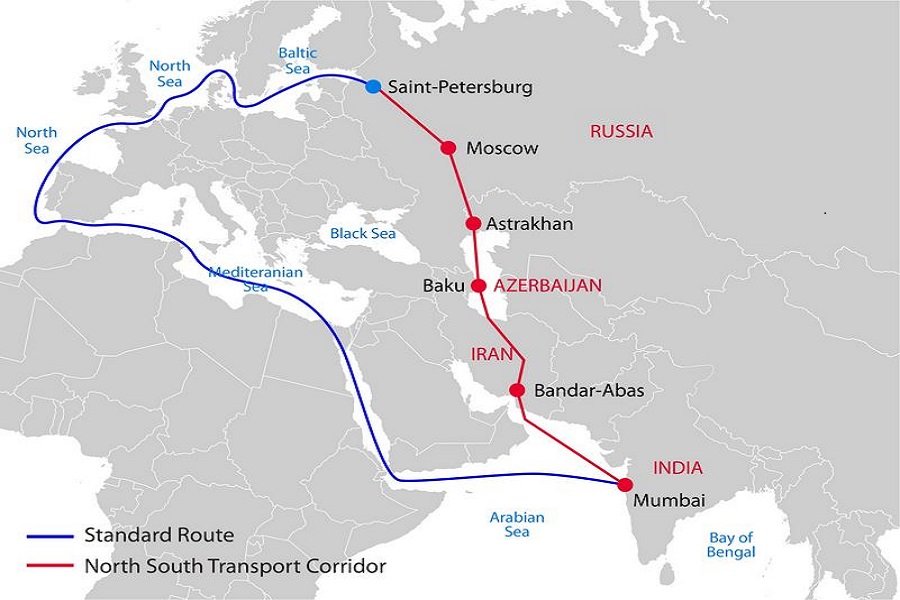North-South Transport Corridor
International North-South Transport Corridor or INSTC is the route by rail, ship and road for the transport of various goods between Russia, India, Europe, Iran and Central Asia. The current INSTC project was started in Saint Petersburg in the year 2000 by India, Russia and Iran. The contract for this project was signed in the year 2002.
This trade route is 7,200 km long and goods are transported through a multimodal network of roads, railways and ships. This route connects Russia and India through Azerbaijan and Iran.
Why was INSTC created?
The old trade route connecting Russia and India was through the Suez Canal. Therefore, the main objective of the formation of this corridor was to reduce the cost and time involved, and the connectivity between major cities such as Moscow, Mumbai, Baku, Astrakhan, Bandar Abbas, Tehran and Bandar Anzail. Hence, India, Iran and Russia signed an agreement in the year 2002 to form the INSTC corridor.
Key Features
INSTC was conceived long before the Belt and Road Initiative of China and will not only help reduce the time and cost involved in moving goods from India to Europe and Russia via Iran, but also It will be an alternative connectivity initiative of the Eurasian region countries. This will also be synchronized with the Ashgabat Agreement, a multimodal transport agreement signed by India, Iran, Oman, Uzbekistan, Turkmenistan and Kazakhstan to create an international transport and transit corridor that will facilitate the movement of various kinds of goods.
Objectives of creating the INSTC
The corridor is expected to cut transportation costs between the countries of Russia and India by at least 30% and cut transit time from 40 days to greater than half. It is a very important corridor for the development of freight transport in the region. This corridor will also be able stimulate the Indian economy. Indian exports are expected to increase significantly in the upcoming few years and this corridor will play a huge role in it. This corridor is expected to improve market access for all the member countries, which can also benefit from various reverse and direct connections.


